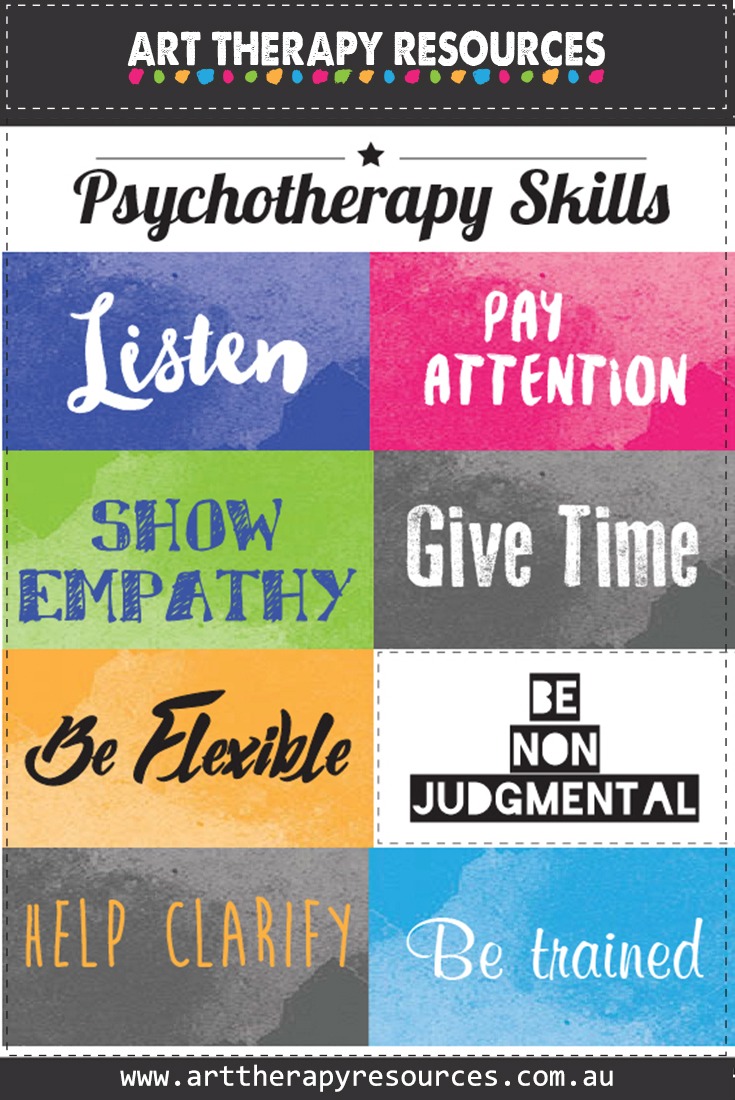THIS POST INCLUDES:
1.What is art therapy and art as therapy
2. Art Therapy Outcomes
3. Art as Therapy Outcomes
4. Free Download
WHAT IS ART THERAPY AND ART AS THERAPY
Art making is a universal activity that we can do for novelty, exploration, relaxation, and creative expression. It can also be used as a method of psychotherapy where the art activity forms part of a treatment session.
Art as therapy has benefits that are purely driven by the act of creative expression while engaging in a relaxing activity. This is similar to watching a movie, taking a walk or reading a book. The act itself is therapeutic in that it transports us away from our daily stresses. During the activity, we may inadvertently experience emotional expression, understanding of ourselves, and moments of personal insight into problems, however, these outcomes are usually an unexpected by-product of the activity. In many cases, although, we experience these outcomes, we don’t know what to do with them once they surface.
Art therapy has the same benefits, however, as the art activity is made in session with a therapist, you are able to be guided on how to process these unexpected emotions and insights. An art therapist can help facilitate the process of identifying and processing difficult emotions that arise from an art making activity. An art therapist can also provide art directives that can help explore difficulties we are experiencing. Examples of these art directives can be seen in our previous case studies:
- Case Study: Using Art Therapy for a Client Going Through a Divorce
- Case Study: Using Art Therapy for a Client Who Is Grieving
- Case Study: Using Art Therapy for a Client with a Stress-related Disorder
- Case Study: Using Art Therapy for a Client with Alcohol Addiction
- Case Study: Using Art Therapy for a Client with Anorexia
- Case Study: Using Art Therapy for a Client with Anxiety
This is a general overview of how art therapy differs from art as therapy, however, for a more in-depth understanding, you can read our blog post What Happens in an Art Therapy Session.
There are many differences between art as therapy and art therapy, however, the crucial difference is the therapist who is able to develop a therapeutic alliance with the client.
The American Art Therapy Association defines art therapy as below:
“Through integrative methods, art therapy engages the mind, body, and spirit in ways that are distinct from verbal articulation alone. Kinesthetic, sensory, perceptual, and symbolic opportunities invite alternative modes of receptive and expressive communication, which can circumvent the limitations of language. Visual and symbolic expression gives voice to experience and empowers individual, communal, and societal transformation.”
The AATA further explains the purpose of the art therapist as:
“Honoring individuals’ values and beliefs, art therapists work with people who are challenged with medical and mental health problems, as well as individuals seeking emotional, creative, and spiritual growth.”
ART THERAPY OUTCOMES
Art Therapists generally have a preferred orientation of psychology theory that provides a reference point on how an art therapy session will evolve. Art therapists work with clients to establish what the client needs help with and make a commitment to help facilitate that process with the client.
Some known outcomes of art therapy provided by an art therapist include:
- Artistic expression with intention
- Challenging psychological beliefs
- Engaging in the process of learning
- Facilitating the exploration and development of memory
- Developing psychological skills
- Learning psychological concepts
- Facilitating change in patterns of thinking
- Regulating emotional expression
- Creating a sense of wellbeing
- Developing self-esteem
- Developing non-verbal communication skills
- Providing insight into the client’s personality
- Developing resilience skills through being challenged and exploring risk taking in art making
- Connecting with others in group art therapy
- Developing trust through the therapeutic alliance
- Sharing experiences with others in group therapy
- Safety in exploring difficult emotions
ART AS THERAPY OUTCOMES
Art as therapy can be beneficial on two primary levels:
- Creating your art
- Appreciating art
CREATING YOUR ART
Below are some of the outcomes of creating art yourself:
- Expression creativity
- Engaging in a fun activity
- Learning a new skill such as drawing
- Feelings of relaxation
- A time for self-care
- Creating a sense of well-being
- Developing non-verbal communication skills
- Building self-esteem in developing skills and artistic achievement
- Connecting socially with other art makers
- Observing the self through the world
APPRECIATING ART
Alain de Botton wrote a book titled Art as Therapy which focuses on the benefits of viewing art as a therapeutic process. In Art as Therapy, Alain explains that art “is a therapeutic medium that can help guide, exhort and console it’s viewers, enabling them to become better versions of themselves.”
Alain details the following psychological functions of art as:
- Remembering
- Hope
- Sorrow
- Rebalancing
- Self-understanding
- Growth
- Appreciation
This book involves exploring a series of art works as tools for the resolution of difficult issues in life. A website Art As Therapy has been created which provides insight into art through the themes of love, self, work, politics, anxiety, and free time.
These functions of art as therapy help explore the broader foundations of the human experience throughout life. Art therapy through the aid of an art therapist helps us to explore each of these individual functions on a deeper level, particular when dysfunction occurs.
FREE DOWNLOAD: Psychotherapy Skills
SIGN UP below to download the FREE Psychotherapy Skills Handout as a guide for the psychotherapy skills to use in Art Therapy.
Download the FREE Psychotherapy Skills Handout.

BUILD YOUR ART THERAPY REFERENCE MATERIALS:
Pin this image to your Pinterest board.

SHARE KNOWLEDGE & PASS IT ON:
If you’ve enjoyed this post, please share it on Facebook, Twitter, Pinterest. Thank you!
